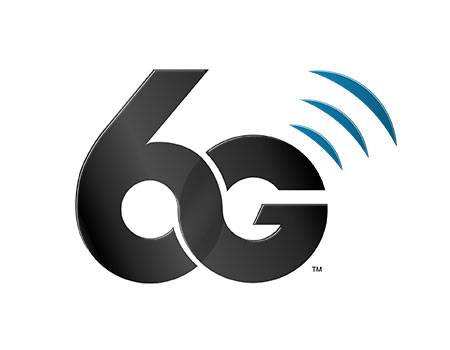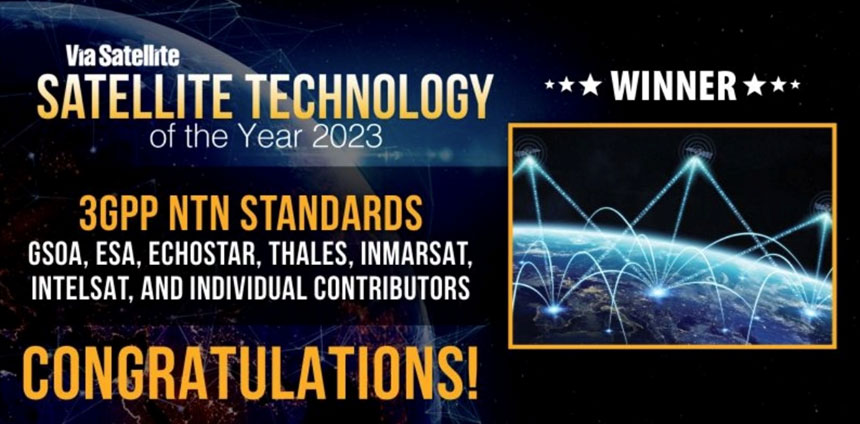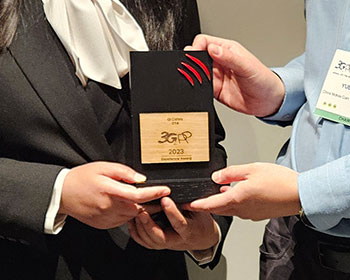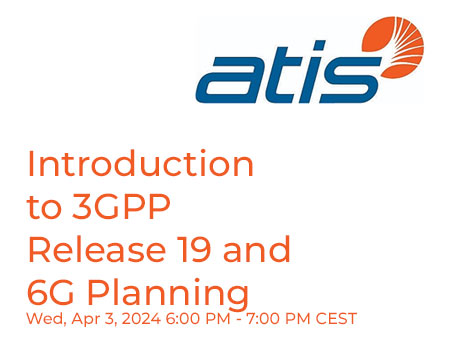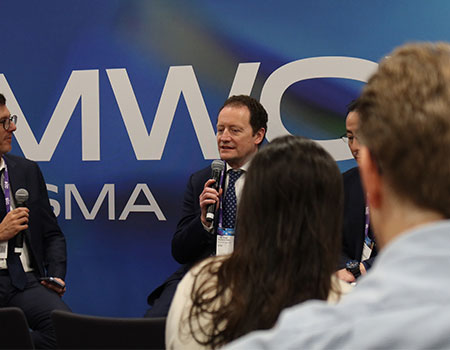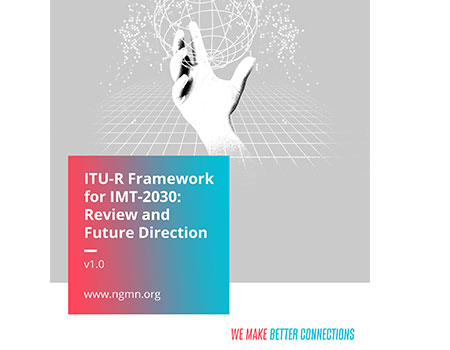First NR specs & 5G system progress
January 5, 2018
This interview was conducted during the 3GPP TSG Plenary meetings, in Lisbon, December 21, 2017. Guy Daniels, the Director of content at TelecomTV, talks to Balazs Bertenyi (TSG RAN Chairman) and Erik Guttman (TSG SA Chairman) about the achievements at that meeting - notably the news of the "First 5G NR Specs Approved".
Guy Daniels: First of all, there has been a lot of progress on the radio aspect of 5G – You have released the first set of 5G NR standards this week. Can you explain to us what exactly that comprises?
Balazs Bertenyi, TSG RAN Chairman: This week has seen a historical achievement in 3GPP. We released the non-standalone (NSA) 5G radio specifications, which means that you need an LTE anchor and besides that LTE anchor, you have the 5G NR cell, but you basically do your control plane & control plane communications through LTE and you boost the user data capacity through 5G NR and the new radio technology. So, that is essentially what is coming out from this week’s specifications.
GD: Did this come early because of an industry requirement to bring forward some of the work and get things in to the market more quickly, but you have still got another set of standards to do before Release 15 is complete?
BB: That is correct, the full schedule of Release 15 calls for completion in June (2018), so we have another six months to complete the full suite of 5G specifications, for Release 15, and that will then complete the so-called standalone (SA) system – that will not have to rely on LTE for control plane communications. It will have full control plane support for the new 5G radio.
GD: Erik, radio is not the sole component of 5G, there is also the network as well. What progress has been made this week on the 5G system?
Erik Guttman, TSG SA Chairman: The 5G system is being developed largely as a new 5G core network and all of the components of that network are being considered – both in terms of the functionality they will provide for the NR and other accesses, but also in interaction with the EPC (Evolved packet core) and the entire 4G system. We are going to have compatibility going forward, as people adopt the new technology.
The new 5G system features capabilities that will allow for orchestration of virtualization, as the components are redesigned to offer a very cleanly separated control plane and user plane – It adopts an internal signalling architecture that’s novel. So, rather than following distinct paths it is a service based architecture, though it support all of the procedures and mechanisms needed to provide mobile telecommunications, these same capacities can be used for other services that can be offered by operators, in the future.
There is also the mechanism of ‘Network Slicing’, which will provide the capabilities to reach service level agreements for groups of devices, according to the goals that we have for supporting new businesses & new vertical industries. That is an overview, but as in the past – we are going to encompass - with this one core network - all of the different kinds of accesses that we now support.
GD: How do you ensure cooperation and coordination between SA, RAN and the different parts of 3GPP?
EG: Most of the coordination actually occurs between the different working groups, between the different actors. Many of the same companies are involved in each of the working groups, in all of the areas. So, there is coordination within companies, between companies, between working groups.
Then, at the level that we work at, which is the technical standards group, we identify - from a programme management perspective – the overall goals for the system and we make sure that each component is aligned, to produce the desired result.
GD: Balazs, how do you think we measure up to the earlier requirements and use cases that operators put forward when we first started talking about 5G?
BB: What we have to recognise is that to make the full 5G vision a reality takes time, it takes multiple phases, it takes multiple [3GPP] releases – just as it did with LTE. So, the full 5G vision is really one with the multiple pillars that guide the overall system development for the next ‘x’ number of years.
Then, if we look at the first drop - that we have just completed this week. That is primarily guided by the early adopters, by the early deployment plans of operators in different regions and those early deployment plans really call for a mobile broadband boost.
So, this is where the slight disconnect comes from “OK, 5G’s wonderful, but the first release only provides mobile broadband”, but what I think we have to recognise is that you cannot fulfil the full vision [of 5G] in one go. You have to start somewhere and you obviously want to start at an area and at a set of features that you can deploy. Otherwise, how would you gain experience with the new technology? So, you really want to focus on those features that are going to get deployed - maybe not tomorrow, but by the end of next year, early 2019.
Then, of course, we are going to continue working on additional features to fulfil the full vision.
GD: Erik, you mentioned network slicing earlier. How far does 3GPP segment the network and look at slices at this stage? Are you just looking at the three major use cases of 5G; broadband, low latency and massive IoT?
EG: Actually, most of our activity is driven by specific verticals. So, we have an on-going project in the area of broadcast technology and vehicle technology (new broadcast support). These are vertical industries that we have been engaging with for some time, but this is intensifying in our 5G efforts. What we are seeing is that we have to take a much broader approach from the system level, to achieve these ends.
The notion of slice ‘types’, that focus initially on mIoT, eMBB and URLLC, ensure that we are aimed at achieving these targets by the time we provide the IMT-2020 delivery.
We are looking at these [verticals] specifically to deliver services with industries that are actively engaged – not only by [using] our standards, but that are actually coming and proving us with guidance, both at the requirements level and by being engaged in doing the standardization work itself.
BB: Direct engagement from those new verticals - that we are really targeting with the full vision - is very important. It has started, as Erik has said, but I am hoping that it is going to intensify more-and-more, as we get players from other industries. From autonomous driving, to all of those verticals that we want to target with our technologies. That is really what will make 5G a success, we cant be constrained by the LTE footprint, we have to go way beyond that. That’s the only way that we can make 5G a success.
GD: This has been something of a departure hasn’t it? The first time you have started talking to other industry groups, outside of telecoms. What have you learned, what have been your experiences in working with some of these industries?
BB: What we see and what makes it difficult is that many of the other industries really don’t have a focal point for this technology and eco-system development. We are fortunate in the wireless industry that both the standards side and the industry side have very good, focused, forums – with 3GPP for standards and for the industry side, with the operators we have the GSMA – for example – you know who to go to. With several of the vertical industries, such forums don’t exist. So, we either have to foster the creation of these, like with the automotive industry the 5GAA was created with that in mind. Many of the other verticals don’t have this, which makes it difficult to really get those players engaged in the [3GPP 5G] process.
GD: This is something that SA has been focusing on as well hasn’t it?
EG: Absolutely, we see these fora emerging or coming to 3GPP in larger and larger numbers. An Industrial automation forum has just started a liaison relationship with us, as have more automotive initiatives – for example. This aspect is very promising, I think that it is important to note that what we have achieved now – at this point – with this preliminary release and certainly by the time we reach June [Release 15 completion] are the foundations on which we are going to build all of the 5G features in the future.
This is the deeper significance of the work we are doing – Not the specific feature that we deliver now, but the fact that both NR and the 5G core network are going to expand on the basis of the foundation that we have provided in the last year.
GD: Where does this leave LTE? Is there a case that you are effectively re-branding LTE as part of 5G?
BB: The re-branding of LTE as 5G will certainly happen, we have seen that back in 2008 when certain parts of the industry were re-branding HSPA & 3G [technologies] as 4G. We will see that, to some extent and at the same time we are also seeing the development of features that we started in NR to trickle over to LTE. For example, high reliability on the radio layer as well as lower latency, which we are also developing for LTE. There is a seamless relationship between the two technologies for the moment. Of course, after a while most of the new features will focus on NR, it is inevitable, but it is going to happen gradually – just like it did with the previous generational shifts.
EG: I think that we are in very good shape for the months to come and it will be an exciting challenge to get through both phase 1 and phase 2 of this initial 5G process and I am very confident that we can achieve the targets that we set out too – for IMT-2020 and even exceed many of those goals.
Contact for this article: Kevin FLYNN, Marketing and Communications Officer, 3GPP


 3GPP News
3GPP News